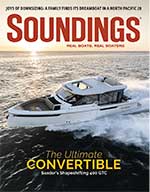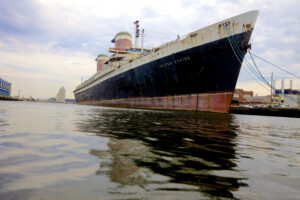Q: You often see yachts towing their dinghies while under way, and it seems like something you’d like to try. How should you go about doing it properly?
Q: You often see yachts towing their dinghies while under way, and it seems like something you’d like to try. How should you go about doing it properly?
A: Towing a dinghy successfully requires thought and planning. There are several things to consider, some of which aren’t immediately apparent.
First, ask yourself if you really want or need to tow your dinghy and why. Remember, towing anything behind a boat will slow you down and require more energy in the form of fuel or wind power. While that may not be an issue for a powerboat with a couple of big diesels, it is more of an issue for a sailboat that loses a half-knot from an average speed of around 5 knots.
I personally recommend towing only when there is no other course of action and only then for short periods and distances. Hard-bottomed dinghies tow best, as they generally have better directional stability and, being slightly heavier than inflatables, sit better in the water.
Avoid towing the dinghy by a single painter attached to the bow, as it will tend to wander from side to side and the chances of it flipping are greater. The best method — the one I use on the occasion that I do tow a dinghy — is to attach a line from each of the stern quarters of the mother ship, which in turn are attached to the painter on the dinghy. Use a swivel where the painter attaches to the bridle to prevent the lines from becoming twisted and tangled. The bridle seems to work best if it comes from each corner of the boat at an angle of about 60 degrees, but you may need to experiment. Adjust the length of the painter by trial and error so that the dinghy rides up on the face of the stern wave formed behind the transom of the towing vessel.
I should note that the painter and bridle should be made from nylon line, which has a good amount of give and stretch and is well able to absorb snubbing loads imposed by the dinghy.
Remove the dinghy’s outboard before setting off and stow it on the towing vessel. An outboard on the stern puts weight just where it isn’t needed. Be mindful of the dinghy once under way, and don’t tow too fast. You risk either losing the dinghy, swamping it with a large stern wave or sinking it.
You’ve probably gathered that I’m no fan of towing dinghies. It looks untidy, slows the towing boat down, and often does damage to the dinghy, which was never intended to travel at the speed they often get pulled.










